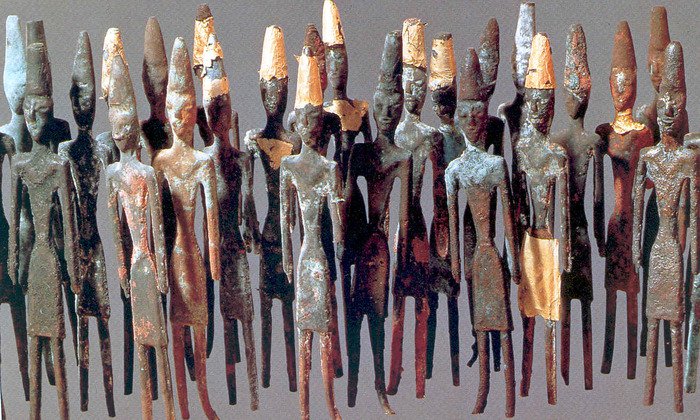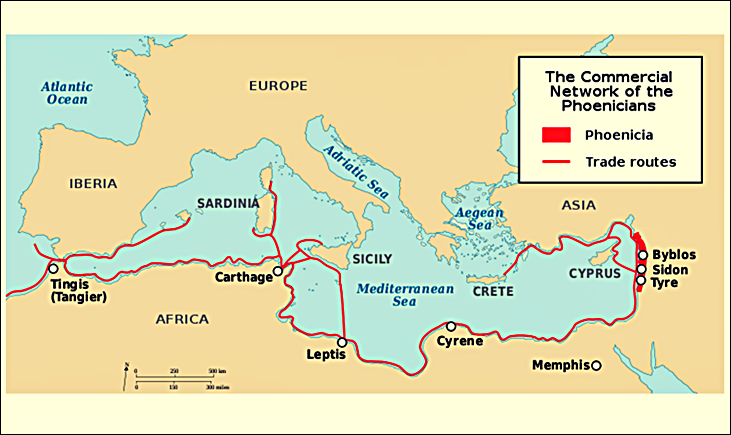دراسة جديدة للحمض النووي لرفات الفينيقيين في لبنان وسردينيا: الفينيقيون لم يكونوا غزاة بل مستكشفين
حقّق فريق من الباحثين إكتشافاً علمياً جديداً في إطار الأبحاث عن حركة السكان والهجرات الإنسانية في حوض البحر المتوسط ما بين القرن الخامس والقرن الثالث قبل المسيح، بقيادة البروفسور بيار زلوعة الباحث في العلوم الوراثية في كلية جيلبير وروز ماري شاغوري للطب في الجامعة اللبنانية الاميركية (LAU)، والبروفسور ليزا ماتيسو سميث في جامعة اواتاغوا في نيوزيلند اللذين قادا فريقاً درس الحمض النووي الذي يعود الى اربعة مواقع فينيقية موزّعة بين سردينيا في ايطاليا ولبنان.
وكان فريق زلوعة قد استهلّ العمل على مشروع الحمض النووي قبل 12 عاماً، لكنّ الإمكانات الحديثة المتوفّرة أتاحت الوصول الى المزيد من النتائج الدقيقة، ما وفّر الكثير من المعطيات لدرس بقايا رفات الفينيقيين الموجودة في المدافن الفينيقية في لبنان وسردينيا والتي تُعتبر من أكبر المدافن الفينيقية في العالم.
وشرح البروفسور زلوعة أنّ الفريق فوجِئ بعدة أمور، منها انه كان يتوقع اكتشافَ بقايا شرق اوسطية للفينيقيين في مدافن سردينيا، فإذ به يفاجَأ ببصمات جينية اوروبية فينيقية مختلطة في المدافن عينها، اضافة الى توفّر البصمات الشرق اوسطية بقيت في جينات سكان سردينيا الإيطاليين الحاليين في موازاة اكتشاف بصمات جينية اوروبية في مدافن فينيقية في لبنان ولا زالت موجودة في سكان لبنان الحاليين.
لكنّ الأهم كان اكتشاف بصمات جينية في المدافن الفينيقية في سردينيا يعود اصلها الى سكان الجزر وسائر المستوطنات الفينيقية في باقي القارة الاوروبية وشمال افريقيا.
يتبنّى البروفسور زلوعة في خلاصة ابحاثه فكرة اساسية فحواها أنّ الفينيقيين لم يكونوا مستعمرين وغزاة للمناطق التي دخلوها وتعاملوا معها، بل مستوطنين وحاملي رسالة سلام واختلاط ايجابي وتجارة واستكشاف وتفاعل خلاق بين الشعوب، بدليل هذا الانتشار الواسع لسلالتهم والانصهار والزواج، الأمر الذي ما كان ليتحقّق بالسيف.
Check the original study published in the scientific journal PLOS ONE here:
http://journals.plos.org/plosone/article?id=10.1371/journal.pone.0190169

Newsweek article - 1/10/18:
DNA FROM MYSTERIOUS ANCIENT CIVILIZATION SHOWS THEY WERE EXPLORERS, NOT CONQUERORS
DNA recovered from the remains of ancient Phoenicians supports the idea that they were lovers more than fighters. The seafaring Mediterranean civilization was an inclusive, multicultural society focused on exploration, according to a new paper published in the scientific journal PLOS ONE.
Led by researchers from the University of Otago in New Zealand and the Lebanese American University in Beirut, the team focused on mitochondrial genomes, or mtDNA, in pursuit of a genetic marker of Phoenician ancestry. By comparing certain gene sequences from Phoenician and pre-Phoenician Lebanon and Sardinia with modern Lebanese DNA, the researchers found genetic evidence suggesting that ancient Phoenicians had fraternized and integrated with ancient indigenous Sardinians.
"What is fascinating about our finding is the very fact that it was revealed to us by mitochondrial DNA," corresponding author Pierre Zalloua told Newsweek via email. "The findings tell us a lot about the Phoenician culture: when these sailors brought their women to settle with them, they intended to integrate rather than to conquer."
The Phoenician civilization began to take shape around 1800 B.C. in the northern Levant, the historical region that roughly corresponds here to the Mediterranean coast along Syria and Lebanon. Over the course of the next 1,000 years, their influence spread out over Asia, Europe and Africa. Yet, as Zalloua explained, most of the historical record about the Phoenicians came from ancient Greeks and Romans—the Phoenician's arch-enemies.
“Most of what the Phoenicians wrote about themselves was either destroyed,” Zalloua told Newsweek, “or has not been discovered yet. From all of what has been written about the Phoenicians...there is no evidence that they invested heavily in an army suitable enough for land conquest."
The primary reason Phoenicians ever left the safety of their own shores was to gather tin, as well as silver and other metals, to pay to the ancient Assyrians as taxes, Zalloua told Newsweek. The researchers' work also helps trace the movement of Phoenician women. Mitochondrial genomes are inherited through the mother's side, so in order for it to appear in a population's genetic code, women had to have given birth to daughters there, corresponding author Lisa Matisoo-Smith explained to Newsweek.
“Often, what is written or recorded in history is a male-dominated perspective," Matisoo-Smith told Newsweek via email. "What is nice about mtDNA is that, not only is it more likely to be preserved in ancient samples due to the greater number of mitochondria (and thus mtDNA) in each cell compared to copies of nuclear DNA, but it also tells us about maternal history, and thus, the history of the women in a population.”


